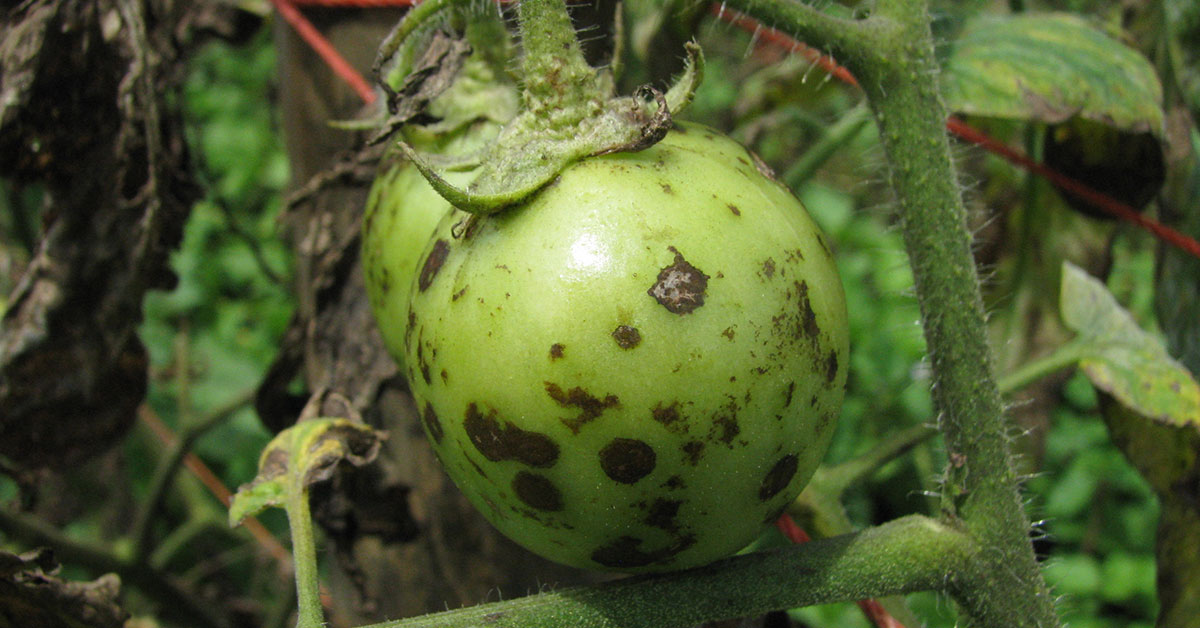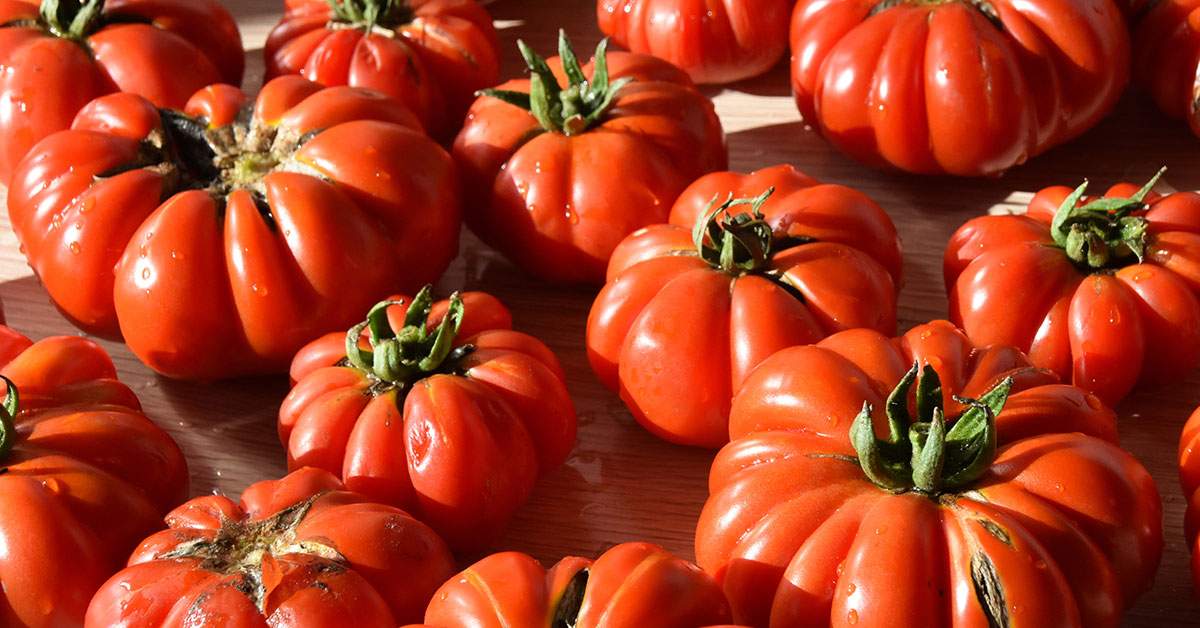Growing tomatoes is a rewarding endeavor, but the journey is not without its challenges. Pests and diseases can wreak havoc on your tomato plants, affecting their health and productivity. However, with early detection and appropriate interventions, you can effectively manage these issues. Knowing how to identify common tomato pests and diseases is key!
In this article, we will explore common tomato pests and diseases, provide guidance on diagnosing each one, and offer practical solutions to help you protect your tomato plants and achieve a bountiful harvest.
Common Tomato Pests:
Aphids
- Diagnosis: Observe clusters of small, soft-bodied insects on new growth, undersides of leaves, or near tender shoots.
- Solution: Spray affected plants with a strong stream of water to dislodge aphids. Use insecticidal soaps or neem oil as organic control methods. For severe infestations, consider using insecticides labeled for aphid control.
Tomato Hornworms:
- Diagnosis: Look for large green caterpillars, around 3-4 inches long, with horn-like projections, usually found on foliage and stems.
- Solution: Handpick and remove hornworms from plants. Apply Bacillus thuringiensis (Bt) insecticide, which specifically targets caterpillars. You can also attract natural predators like parasitic wasps or release beneficial nematodes to control them.
Whiteflies:
- Diagnosis: Observe tiny white insects with a moth-like appearance flying around plants, especially when disturbed. Look for sticky honeydew residue on leaves.
- Solution: Use yellow sticky traps to monitor and catch whiteflies. Introduce natural predators like ladybugs or lacewings. Apply insecticidal soap or neem oil to control populations. For severe infestations, consider using insecticides labeled for whitefly control.
Cutworms:
- Diagnosis: Notice seedlings or young plants severed at the stem base. Cutworms are often active during the night.
- Solution: Use protective collars around young plants to prevent cutworm damage. Handpick and remove cutworms from the soil surface. Apply Bacillus thuringiensis (Bt) insecticide as a preventive measure.
Tomato Fruitworms:
- Diagnosis: Identify caterpillars in the fruit, usually near the stem end, leaving holes and feeding damage.
- Solution: Handpick and destroy affected fruitworms. Apply Bacillus thuringiensis (Bt) insecticide when caterpillars are small and actively feeding. Insecticides labeled for fruitworm control can also be used.
Common Tomato Diseases:
Early Blight (Alternaria solani):
- Diagnosis: Observe dark brown lesions with concentric rings on lower leaves, which may spread to stems and fruit.
- Solution: Remove infected plant parts and practice crop rotation. Apply copper-based fungicides or organic fungicides labeled for early blight control. Maintain good airflow and avoid overhead watering.
Late Blight (Phytophthora infestans):
- Diagnosis: Look for dark, water-soaked lesions on leaves, stems, and fruit. Under humid conditions, a white, fuzzy mold may develop on the underside.
- Solution: Remove and destroy infected plants immediately. Apply fungicides labeled for late blight control, following the recommended application intervals. Ensure good airflow and avoid overhead watering.
Fusarium Wilt (Fusarium oxysporum):
- Diagnosis: Observe yellowing and wilting of lower leaves, followed by wilting of the entire plant. Cut stems may show brown discoloration.
- Solution: Prevention is key as there is no cure for Fusarium wilt. Plant resistant tomato varieties and practice crop rotation. Ensure well-drained soil and avoid overwatering.
Verticillium Wilt (Verticillium spp.):
- Diagnosis: Notice wilting and yellowing of leaves on one side of the plant, progressing upwards. Cut stems may reveal brown discoloration.
- Solution: Remove infected plants and practice crop rotation. Choose resistant tomato varieties. Improve soil drainage and avoid overwatering.
Tomato Mosaic Virus:
- Diagnosis: Observe mottled, distorted leaves with yellow or green patterns. Plants may exhibit stunted growth, reduced fruit quality, and mosaic-like discoloration.
- Solution: There is no cure for viral diseases. Prevent the spread by removing and destroying infected plants. Control aphids, which can transmit the virus. Plant resistant varieties.
As a tomato grower, it’s essential to be vigilant in identifying and addressing common pests and diseases. Regular monitoring, prompt action, and employing appropriate control measures can help protect your tomato plants and maximize their yield. By implementing the suggested solutions for each issue discussed in this article, you’ll be well on your way to cultivating healthy, thriving tomato plants and enjoying a successful harvest.













